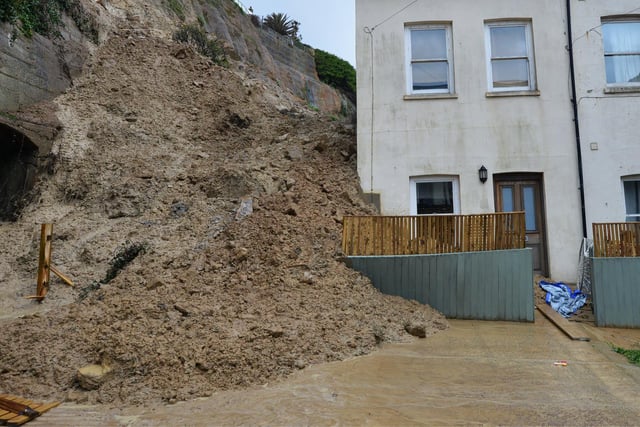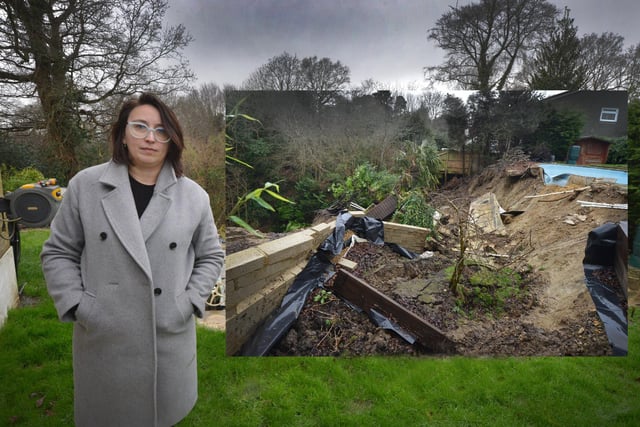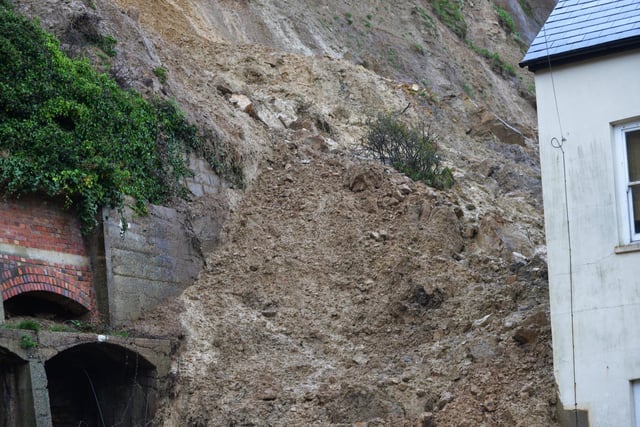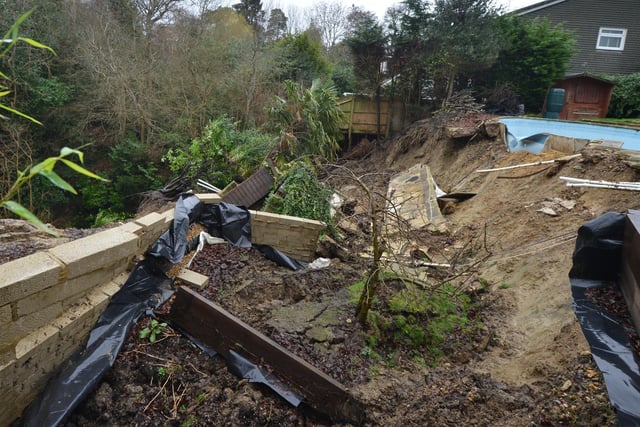Two families have been left homeless after the recent landslide at Old Roar Gill, at the top of Alexandra Park. The incident at Caves Road follows a slide of rock, debris and mud down the slope below West Hill Road On Sunday November 5, last year, after days of heavy rain, that affected one or more properties on the Marina road below.
Now there are fears that nearly 15 hours of solid heavy rain on Sunday and overnight on Monday (February 26) could cause the situation to worsen.
The British Geological Survey has explained in detail what causes landslides. It is the UK’s premier provider of objective and authoritative geoscientific data, information and knowledge, covering environmental change and environmental hazards.
A landslide is a mass movement of material, such as rock, earth or debris, down a slope. They can happen suddenly or more slowly over long periods of time.
When the force of gravity acting on a slope exceeds the resisting forces of a slope, the slope will fail and a landslide occurs. External factors can lead to landslides happening, including: heavy rainfall leading to saturation of the ground; erosion of the base of a slope and changes to the material’s strength through weathering.
Landslides include ‘falls, such as the large sections of rock that have fallen from the cliffs above Rock-a-Nore and Fairlight, onto the beach and ‘slides’ such as the recent incident.
A slide-type landslide is a downslope movement of material that occurs along a distinctive rupture or slip surface. The slip surface tends to be deeper than that of other landslide types and not structurally controlled. These landslides are characterised by a prominent main scarp and back-tilted bench or block at the top, with limited internal deformation. Below this, movement is more or less rotational about an axis.
Slides are characterised by a failure of material at depth and then movement by sliding along a rupture or slip surface. There are two types of slide failure, rotational slides (slumps) and translational (planar) slides.
A landslide may occur because the strength of the material is weakened. This reduces the power of the ‘glue’ that cements the rock or soil grains together. Located on a slope, the rock is then no longer strong enough to resist the forces of gravity acting upon it.
Adding water, such as heavy rain, to the material on a slope makes a landslide more likely to happen. This is because water adds weight, lowers the strength of the material and reduces friction, making it easier for material to move downslope.
The angle and steepness of the slope is a key factor as far as landslides are concerned, with steeper slopes being more susceptible to landslides.

1. Landslip at Caves Road in St Leonards on February 26 2024.
Landslip at Caves Road in St Leonards on February 26 2024. Photo: staff

2. Landslip at Old Roar Gill: Ralitsa Hiteva and her family have been forced out of their home due to the landslip behind their property at 24 Foxcote.
Landslip at Old Roar Gill: Ralitsa Hiteva and her family have been forced out of their home due to the landslip behind their property at 24 Foxcote. Photo: Staff

3. Landslip at Caves Road in St Leonards on February 26 2024.
Landslip at Caves Road in St Leonards on February 26 2024. Photo: staff

4. Landslip at Old Roar Gill: The garden of 24 Foxcote.
Landslip at Old Roar Gill: The garden of 24 Foxcote. Photo: Staff